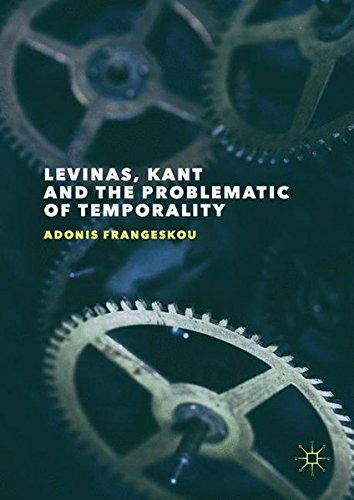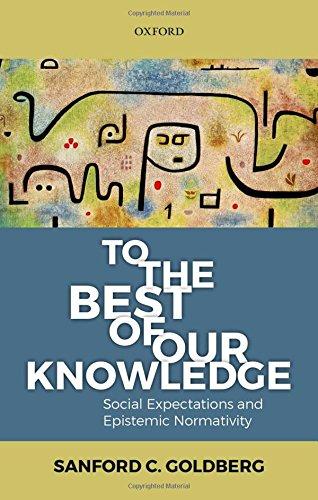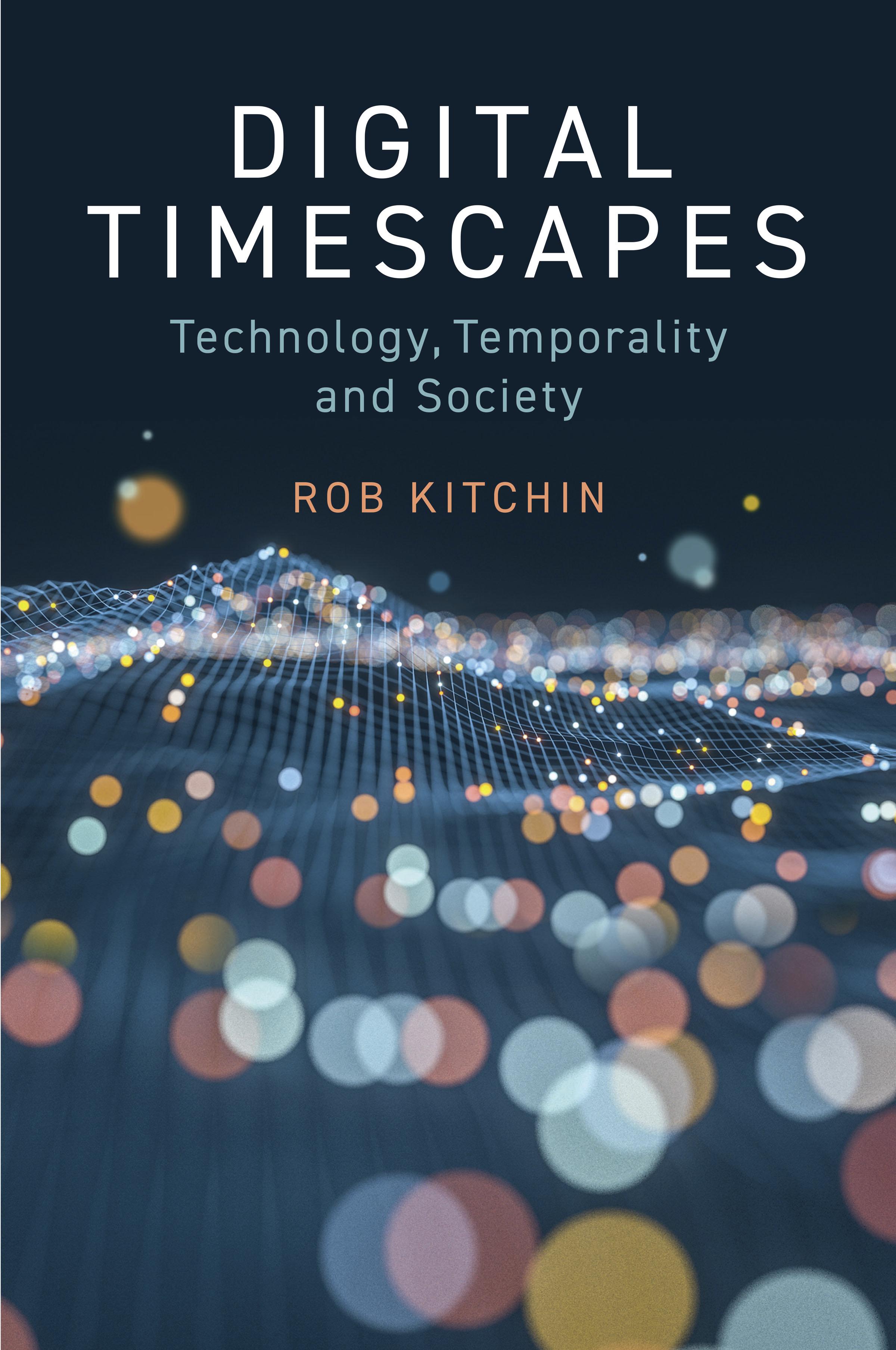TIME, TEMPORALITY AND TIMESCAPES
The key contention of Digital Timescapes is that digital technologies, in a range of guises (as devices, systems, platforms and infrastructures), have profoundly transformed the temporalities of social and economic life, as well as our contemporary conception of time. How time is understood and experienced is different from thirty years ago and the tail end of the dominance of clock time. We now expect to be able to: instantly source a vast array of information and services at any time, from anywhere and on the move; interleave and timeshift activities into ‘dead time’, such as performing networked labour while waiting at a bus-stop; binge watch a television series made and broadcast in a different jurisdiction on our own schedule and at a playback speed of our choosing; communicate and interact in synchronous and asynchronous ways with a diverse network of social contacts spread across the globe; browse and compare goods, buy them with the click of a button and have them delivered within hours; alter meet-ups and travel plans on the fly in relation to unfolding circumstances; access news occurring anywhere on the planet as it happens; and perform work in more temporally flexible ways. These tasks were largely impossible until recently. Now they are all taken for granted and routine for a large proportion of the population, particularly in the Global North. Just as there was a shift from a task orientation to time to a clock orientation during modernity, over the last three decades there has been a shift to a network orientation to time. Prior to examining this contention in depth in subsequent chapters, it is important to set out the conceptual understanding of time adopted and explicated throughout the book. This is necessary in order to frame and situate the subsequent analysis, as the nature of time cannot be taken as given. This chapter, then, details a
contingent, relational, heterogeneous understanding of time; introduces the notion of timescapes; and outlines four cautionary issues to keep in mind when assessing the relationship between technologies, temporalities and everyday life.
The social production of temporality
Philosophers and other scholars have long mused on the nature of time, with a number of conceptual positions elaborated (see Adam, 1990; Burges and Elias, 2016). For some, time is abstract, absolute and essential in nature, best understood through physical laws as inviolate and linear, the irreversible passage from the past to the future that unfolds independently of human existence. Such a view understands time as universal and objective, a phenomenon that can be measured quantitatively and expressed as clock time, and is evident in the cycles of seasons and life and death (Kern, 1983). For others, time is not simply given – a fundamental dimension within which we exist – but is actively produced. Time is contingent, relational and heterogeneous (Adam, 1990). It is perceived, experienced and social. This notion of time is often referred to as temporality, which Hoy (2009: xiii) defines as ‘time insofar as it manifests itself in human existence’. Temporality denotes the diverse set of temporal relations, processes and forms that are enacted and experienced through individual and collective action. Temporalities are embodied, emplaced, materialized and experiential (Grant et al., 2015); they are time performed through individual agency, entangled with the temporalities of others, and structured through institutional arrangements and mediating technologies and systems (Sharma, 2014). Temporalities are experienced as a complex entangling of past, present and future, rather than as time’s arrow.
That temporality is plural and heterogeneous is well established within the social sciences literature (Adam, 2004). Rather than time being abstract, universal and homogeneous, it is understood as being produced, articulated and experienced in multiple ways. Temporal relations are diverse, non-linear and multifaceted, with people navigating and producing many temporalities simultaneously (West-Pavlov, 2013). For example, Burges and Elias (2016) identify three forms of temporality: time as history (how time is periodized and the relationship between past, present and future); time as calculation (how time is measured and used to structure activity); and time as culture (how time is mediated, embodied, placed and experienced).
time, temporality and timescapes
Each orientates time with respect to a particular framing. Similarly, Leong et al. (2009) identify a tripartite conceptualization of temporality that mirrors Lefebvre’s (1991) three forms of spatiality: conceived time (the formal structures and technologies, such as timetables and clocks, that represent and organize time), perceived time (how time is understood and experienced), and lived time (the everyday social practices that enact temporalities) (Humphreys, 2020). These three forms of time collide and work together to produce complex temporalities that vary with context. Peter Osborne (2013: 17) thus writes that the present is not simply experienced ‘in’ time, but consists of a coming together ‘of’ times – what he terms ‘a disjunctive unity of present times’ (cited in Burges and Elias, 2016). These present times unfold dynamically, fluctuating in pace, tempo, rhythm, duration and continuity, ‘some long run, some short term, some frequent, some rare, some collective, some personal, some large-scale, some hardly noticed’ (Crang, 2001: 190).
The multiplicity of time is made clear when one maps out the diverse set of temporal rhythms, cycles, relations and modalities in which we are enmeshed daily (see table 1.1). We are accustomed to dealing with temporalities ‘organized around the individual, family, community, fiscal unit, or legislative entity’ and denoted in ‘biological (menstrual cycle, lifetime), chronometric (second, hour), calendrical (day, decade), historical (election cycles, technological development), or economic (business cycles)’ terms (Houser, 2016: 145). We make and save time, utilize and waste it, use it as reward (holidays) and punishment (serving time) (Hassan, 2009). People enact, and are ensnared within, many intersecting temporal relations that shape the perception and experience of time, and influence how social and economic systems work. Practices and processes unfold at varying paces and tempos; they are diversely coordinated and sequenced; and they produce numerous efficiency and productivity effects. Likewise, everyday life unfolds within and through polymorphic and concatenated temporal rhythms and cycles that produce a sense of continuity, stability or disjuncture. Lefebvre (2004) identifies two main types of temporal rhythms. Linear repetitions are ‘imposed structures’ enacted through social practices, such as clock time and timetables, whereas cyclical repetitions are ‘lived time’ originating in ‘nature: days, nights, seasons’ (Lefebvre, 2004: 8). Individuals commonly encounter and co-produce several rhythms simultaneously. In some cases, rhythms can be eurhythmic, being harmonious and stable though not necessarily in-sync, or isorhythmic, being equal and synchronized, or arrhythmic, being out-of-sync and disruptive (Conlon, 2010).
Table 1.1 Multiple forms of temporality
Temporal rhythms/ cycles and measured time
Natural Earth seasons; diurnal cycles; body clocks; turning of tides; environmental processes
Social and economic National holidays; celebrations; festivals; holy days; working hours; time rules; rush hour; family mealtimes; business cycles; policy cycles; boom-and-bust cycles
Technical
Product lifecycle; updating; planned obsolescence; phasing; dereliction and ruin; machine time
Clock/measured time
Second; minute; day; week; month; year; decade; century; millennia; 24/7; standardized time
Temporal relations Pace and tempo Speed; acceleration; refrain; rate; repetition; duration; immediacy; ahead/behind the curve; deceleration; stasis/inertia; hesitation; time flies/drags
Scheduling Coordination; sequence; phasing; prioritization; continuity; frequency; routine and habit; just-in-time; on-the-fly; peak time; timetables; deadlines; temporal density and fragmentation
Efficiency Productivity; punctuality; simultaneity; rapid response; fast-tracking; leap-frogging; latency; delay; synchronization; multitasking; time shifting; optimization; flexibility; temporal arbitrage
Time-space compression
Time-space convergence and distanciation; global present; network time; instantaneous time; timeless time
Temporal modalities Past present History; memory; memorialization; heritage; preservation; evolution/ change; trend; legacy; path dependency; forgetting; hindcasting
Present present Event; prehension; real-time; of-the-moment; serendipity; always-on; prototyping; liminality; mediated time; nowcasting
Present future Pre-emption; trends; short/ mid/long term; projection; speculation; promissory; prediction; simulation; prophecy; premediation; forecasting
Future present Aspiration; anticipation; preparedness; foresight; scenarios; long-term; backcasting
Source: created by the author; re-organized and extended from Kitchin (2019a).
Moreover, while the past, present and future act as a chronology against which temporality can be registered – before, now and after – in lived practice they are reciprocally entangled, ‘folded into each other in qualitatively different ways’ (Koselleck, 2004: 242), rather than being distinct, independent, sequenced categories. The present is an extension built on both the past and an anticipated future. Remembering an event, such as climbing a mountain as a child, entwines past and present, and anticipating its repetition enmeshes the future (Brockmeier, 2002). Similarly, when redeveloping a historic marketplace, replacing it with a shopping mall and apartments, the nostalgia and memories of the past, previous failed proposals, present conditions and activities, and future ambitions become interwoven in public debates and decision-making (Moore-Cherry and Bonnin, 2020). In governance practices, the past and future are produced in the present through algorithmic systems – for example, migration movements across the Mediterranean are simultaneously monitored and tracked in real-time, archived in databases to create a past record, and modelled for future-orientated risk (Tazzioli, 2018). The homepage of an online newspaper has a mixed sense of liveness, blending real-time news with rapidly dating archived stories and the premediation of potential future scenarios, which could all relate to the same unfolding event (Ekström, 2016). In routing and locationbased apps, archived data concerning past events guide the present by anticipating and pre-empting potential futures (Thatcher, 2013). This collapsing and enmeshing of past-present-future is common in emergency management, designed to manage immediate risk and pre-empt new events (see chapter 5). This entanglement is captured in Adam and Groves’ (2007) use of ‘past present’, ‘present present’, ‘present future’ (the future projected forward from the present) and ‘future present’ (an anticipated future backcast and imagined in the present), which fuse the terms together, with the present the common denominator ‘because experientially, the past, present and future do not have an existence outside of the present’ (Dodgshon, 2008: 7). The heterogeneous nature of time, and the entanglement of past, present and future, are evident in the use of diverse temporalities in fiction, television and film, where time is used to structure narratives and also as plot devices (e.g., flashbacks, replays and recaps; slow motion and fast forwarding; time jumps, time loops and time travel; premonitions). Particular genres are often characterized by their temporal logics, such as the narrative time of soap operas, the real-time of reality shows, and the fragmented and inventive time of science fiction (Keightley, 2012). Similarly, as Kuhn (2010: 299)
time, temporality and timescapes
a plural, hybrid temporal landscape that differs from metropolitan Europe or North America, while simultaneously being partially organized to align with metropolitan time. For example, a significant part of the Bangalore economy functions during the night to align with Western customers and clients (Nadeem, 2009). At a local level, temporalities vary across and within neighbourhoods (e.g., city centre, suburbs, slums) and households (e.g., single, family, empty nesters). In other words, places do not possess a singular temporality, but are composed of multiple colliding, unfolding temporalities that stretch from the local to the global (Crang, 2007). It is little wonder, then, that so many forms of time are identified within time-centred studies: cosmological time, sacred time, mythological time, profane time, clock time, real-time, machine time, network time, mobile time, postcolonial time, patriarchal time, mediated time, geological time, spectral time, quality time, public time, historical time, along with many others.
The production of time
Given that the nature and experience of temporalities are multiple, dynamic and heterogeneous, it follows that they are produced rather than given (May and Thrift, 2001). Time is not an empty, abstract dimension through which we pass. Rather, we create temporalities within social context through a variety of processes and systems, many of which are technologically mediated by devices (such as clocks and timetables), and institutionalized within social structures (such as households, work, governance, religion). Time, as we perceive, generate and experience it, is eventful. Temporalities unfold in contingent, relational, contextual ways, ‘coloured and contoured, given shape, diversity, variation and substance through their unique circumstance of creation’ (Hassan, 2009: 50). Temporal regimes are (re)produced through social practices that have a temporality (e.g., pace, tempo, rhythm, sequence) and generate temporality (Shove et al., 2009).
An eventful notion of time
In an eventful, processual notion of time, temporalities are always in a process of becoming or unfolding. The countless happenings and encounters in which people take part generate, and are conditioned by, multiple, colliding, intersecting temporalities (Crang, 2005;
Sewell, 2005). The unfolding of temporalities is not predetermined, but is subject to emergence and critical junctures (Grzymala-Busse, 2011). In many cases, unfolding temporalities reproduce predominant temporal patterns and orders, or follow the trajectory of a path dependency (Sewell, 2005). Their constituent practices can be routine and (un)conscious habits that maintain the daily rhythms and sequences of everyday life – waking to an alarm, breakfast time, commuting during rush hour, working 9-to-5, evening mealtime, primetime television, going to bed. Moreover, many are enjoined, following an expected sequence – in a religious ceremony, the leaders and congregation are enjoined to perform rituals in a set pattern that have normalized timings and rhythms; enacting labour involves the enjoining of tasks in a performative order that ensures a job is fulfilled (Schatzki, 2009). Indeed, despite the emergent nature of temporality, it is not in permanent, divergent flux, having durable regularities that create hegemonic, normative time.
Nonetheless, these routines may subtly transform the temporal order through gradual, imperceptible shifts in practices (Anderson, 2015). In other words, the refrain of temporal rhythms is constantly articulated anew through citational repetition, but these mutate through imperfections and interventions (Edensor, 2010). While a system might strive to maintain a eurhythmic state, it is always unfolding in a slightly altered form, or it might be ‘punctured, disrupted or curtailed by moments and periods of arrhythmia’ and dissolve into noise (Edensor and Holloway, 2008: 485). Planned interventions, such as new policy and regulation, or unexpected or unpredictable incidents, such as emergencies, rupture the temporal order, with critical junctures creating new trajectories (Sewell, 2005). Moreover, happenings are nested, with sub-events taking place within larger events that may have differing durations, speeds, tempo, timings, sequencing and effects (Grzymala-Busse, 2011). For example, the temporal regime of communism in Eastern Europe was transformed in the early 1990s by a range of localized transitions taking place within wider national and regional transformations to a democratic, post-socialist, market-based regime (Goodin, 1998). Some of these transition events were rapid, shock ruptures; others unfolded more gradually. Likewise, work practices may be nested within activities that have differing temporal horizons – an immediate task, a larger job order, an emerging crisis, a yearly target, a mediumterm strategy, a long-term economic cycle (Sewell, 2005).
While there is a certain degree of agency in the performance and unfolding of temporalities, they are inflected and structured in a
time, temporality and timescapes
number of ways: contextually, socially and institutionally. The unfolding of events through temporal practices and the reproduction of temporal regimes are contingent on the context in which they take place (Adam, 1990). Exogenous factors, which are external to the systems in which practices are enacted, along with endogenous factors, are at work (Shove et al., 2009). Differing cultures, historical precedents, political-economic situations and local conditions create divergent conventions and expectations (Sewell, 2005). Pressures due to varying circumstances, such as a rush to meet a deadline, create differing conditions and experiences from a leisurely performance. The availability of certain technologies shapes how practices are performed, and their efficiency. Delays might be created by a lack of required technical or embodied knowledge to accomplish a task. Consequently, the weaving together of the temporal texture of daily life never reproduces the exact same pattern, and is always open to tears and breaks (Shove et al., 2009).
While individuals can shape the production of temporalities, they are generally a collective manufacture. We share tasks and environments. We negotiate, coordinate and synchronize schedules, and work to shared deadlines (Southerton, 2006). We align pace and tempo, and collectively produce rhythms. In her analysis of the temporal landscape of an intersection in Shibuya, Tokyo, Sharma (2014) details how multiple interdependent and relational temporalities are tangled together. The time-spaces of those shopping, working, playing and passing through the crossing are intertwined, if only in fleeting, direct and indirect, ways. The masses of people converging and navigating the intersection are temporally ordered, in part through the design of the space and its regulation through traffic lights, but also through social conventions and patterns of commuting, consumption and servicing (Sharma, 2014). Living in the same household similarly involves producing shared temporalities around activities such as mealtimes, domestic work, childcare and leisure. Our personal temporalities, then, are just one part of a complex hybrid temporal landscape, and we are always in the process of maintaining or transitioning shared temporalities (West-Pavlov, 2013).
(Re)producing temporal power
This collective manufacture of temporalities ‘is composed of a chronography of power’, with individuals having differing abilities and
time, temporality and timescapes
temporality is a structuring relation of power, used to reproduce and exploit further uneven and unequal social relations and produce a sense of time shaped by and enacted through forms of temporal discipline and control (May and Thrift, 2001; Sharma, 2017).
Temporal power is formally institutionalized in the temporal organization, expectations and rules of state bodies, companies, and civic organizations, framed by and reproducing a wider political economy. Indeed, the control of temporality has been important in the imposition and workings of modernity, colonialism, capitalism and communism. Consequently, portions of daily life are ordered around formalized timetables: work and school hours, opening times, break periods, transport schedules and public holidays. Interactions with the state and law are ordered via appointments and deadlines. State bodies track key dates – such as births, deaths and marriages –and judge eligibility for services based on age and length of service. They can introduce policies and regulations concerning working times, operating hours, periods in elected office or serving on state boards, and curfews in times of emergency (Radoccia, 2013). Companies aim to create efficiencies and productivity through time rules and management practices relating to work pace, rates, coordination, synchronization, scheduling, deadlines and delivery times. In these cases, power can be direct and strategic, creating highly structured temporal relations, or operate more indirectly as a form of ‘soft conditioning’ designed to coerce or manipulate compliance with temporal regimes (Markham, 2020).
Temporal power is also embedded into technologies and technical systems, expressed through what Mackenzie (2006) terms ‘secondary agency’. Wajcman (2018, 2019), for example, demonstrates how ongoing developments in scheduling and time management apps codify the values and lifestyles of their Silicon Valley creators, and reflect their desire to produce intelligent digital assistants that optimize productivity and minimize dead time (see chapter 8).
Operational systems such as traffic control have formalized rules regarding timing, phasing, offsetting, cycle lengths, prioritization and road speeds, depending on traffic conditions, direction and types of users (cars, trucks, buses, cyclists, pedestrians) (Coletta and Kitchin, 2017; see chapter 6). Archives are not a neutral, technical means of storing records and artefacts, but rather are social-technical systems created by actors with particular aims, who make choices about what are archived and the terms under which they can be accessed and used, and, in turn, what can be asserted about the past (Bowker, 2005; see chapter 3). In other words, time-mediated technologies
time, temporality and timescapes
processing, living within, and co-producing multiple temporalities, and being entangled within temporal power. For the most part, we encounter these temporal logics and relations with barely a thought: they are everyday hegemonic temporalities we navigate regularly, and experience and perform unconsciously through habits and routines (Hassan, 2009). Indeed, our relations with time are largely normalized and we are well able to handle cognitively their various intertwining and discontinuities. From birth, we are socialized into the logics and patterns of temporalities such as sleep and mealtimes, the school timetable and the working week. We learn how to deal with time pressures and stresses, and to employ time tactics to produce alternative temporalities. We appreciate, at the subjective level, that how we perceive and experience temporalities varies with context, and across individuals and groups. Time ‘moves at multiple speeds, relative to lived situations, perceptual perspectives and affective immersions in environments’ (Grant et al., 2015: 7). The same event can seem slow or fast, or eurhythmic or arrhythmic, depending on the role and experience of the individuals attending. In an exam, time for the bored invigilator seems to pass slowly, whereas it zips by for the stressed student; one person stuck in traffic might revel in the break from work, whereas another is anxious at the prospect of being late. The perception and experience of temporal power are uneven in distribution and consequence, with cultural identities formed, in part, through socialization in, and repeated encounters with, oppressive temporal regimes. Lived time is gendered, classed and racialized, with the orientation to and consciousness of time, and experience and perception of temporalities, varying in quite distinct ways depending on social status. It is embodied in temporalized practices, such as rushing to meet deadlines or meet targets, juggling the scheduling of work, home and childcare, and waiting in queues and killing time due to under- or un-employment. The workings of powerchronology, then, produce markedly differing lived temporalities and time consciousness across individuals and social groups. In reshaping the timescapes of domains and sites, digital technologies remediate the unfolding of lived and subjective time, and their relation to our sense of self, and our emotional and physical well-being (Hassan, 2009; Wajcman, 2015). Understanding the relationship between time, technologies and social and economic relations thus requires more than identifying and detailing the processes through which time is produced. It also necessitates charting how these processes and their resultant temporalities are perceived and experienced, and their implications for individuals and communities.











